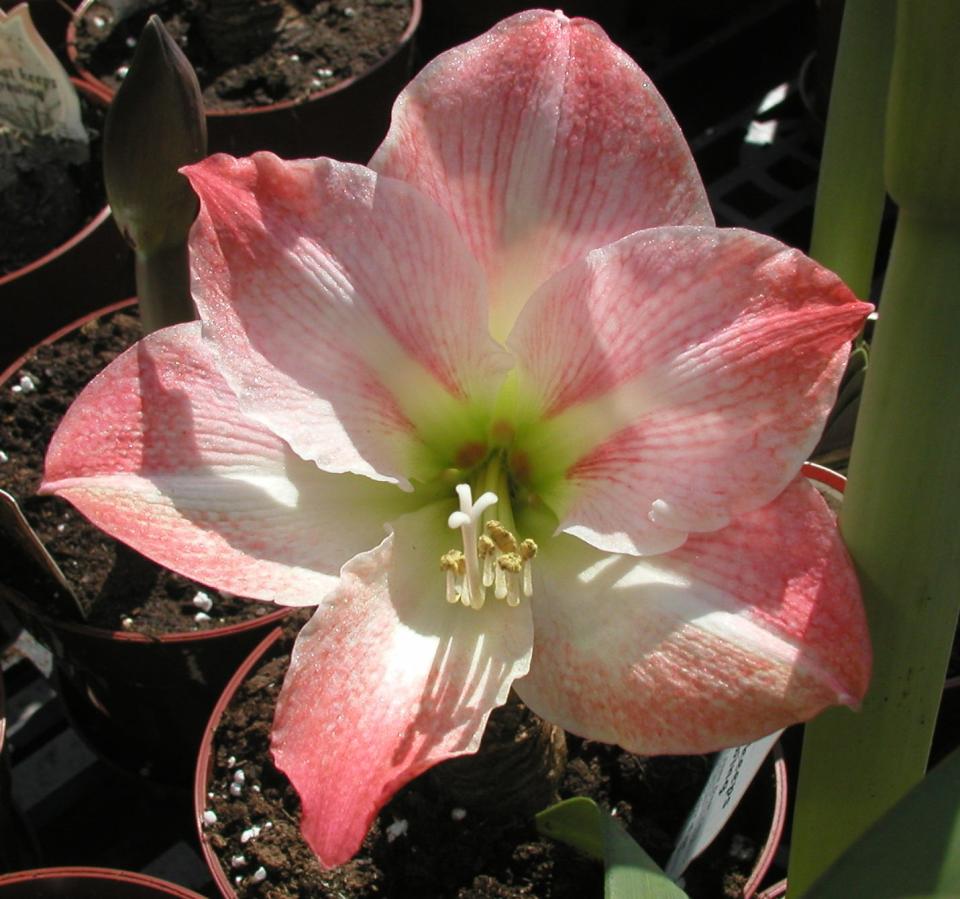Amaryllis flowers can brighten any landscape; here's how to grow them | Sally Scalera
For those of you who love growing flowers, consider planting some Amaryllis bulbs.
Amaryllis bulbs produce colorful blooms in red, pink and white, as well as striped white and red. They are also easy to grow, will spread out over time, and might still be in stores now.
In Florida, we can grow amaryllis in the landscape and containers. Amaryllis are an excellent landscape plant that can be used in a variety of ways. They can be used in a mass planting of 10or more of the same color or planted in scattered locations throughout the landscape to provide splashes of color and texture. Amaryllis can also be planted as a border to create a pleasing contrast to a backdrop of evergreen shrubbery in tree islands, on slopes or near a gate entrance.
Amaryllis will grow best in full sun to light shade. Well-drained soil is a must, and heavily shaded locations should be avoided because the plants will not grow or flower well. The bulbs may be left in the ground for years and periodically divided and replanted.
The bulbs should be planted 10 to 12 inches apart, with the bulb's top half showing so the its neck is well above the ground. This is important, because bulbs that are planted too deeply will only produce foliage. Over time, the bulbs can become buried, so if they stop blooming, dig up the bulbs, spread them out into some new areas, and replant some back in the original spot.

If you have amaryllis that haven’t bloomed in more than a year, it is time to dig them up and replant them so they will bloom again.
Amaryllis usually blooms well without any help, but I recommend establishing the soil food web around the roots of your new and established plants. Email the UF/IFAS Extension Brevard County Master Gardeners at brevard-mg1@ifas.ufl.edu for more information on establishing the soil food web.
Water is crucial for amaryllis growth, and with the aid of mycorrhizae, watering will become easier. If your amaryllis is going to be planted among evergreen plants, be sure to get a mycorrhizal mixture that includes ectomycorrhizae to support the evergreen plants. After planting, add a layer of mulch around the bulbs to conserve water.
A good cultural practice for amaryllis is to remove faded blooms before seeds are produced unless you want the plants to multiply or to collect the seeds. When seeds are produced, there will be reduced flowering the next year. Removing faded blooms will also help to maintain the beauty of the planting.
To increase the life of the blooms, remove the anthers to prevent pollination and the production of seeds. The anthers are the long, yellow filaments that produce pollen and protrude from the center of the flower.
Amaryllis are easy to find in the spring and during the holidays and come in large, single blooms or double flowers that contain twice the number of petals.
Also available, but harder to find, are dwarf amaryllis. Dwarf amaryllis produces smaller flowers that are by no means less impressive. They are an ideal complement to the larger blooming amaryllis and can be stunning as a mass planting of their own. Though their flowers are smaller, dwarf plants produce up to 18 flowers per bulb.
The Belladonna lily, Amaryllis belladonna, bears clusters of fragrant flowers about 3 inches in diameter that come in pink, rosy-red, mauve or white colors. The blooms typically have contrasting yellow throats.
So, if you’re looking for some new plants for the yard, you may want to look for amaryllis bulbs the next time you go shopping. For the entire scoop on Amaryllis, check out our bulletin at edis.ifas.ufl.edu. Search for "amaryllis".
Stores may not have any bulbs packaged in attractive boxes left, but they will be getting bulbs soon because spring will be here shortly.
Sally Scalera is an urban horticulture agent and master gardener coordinator for the University of Florida’s Institute of Food and Agriculture Sciences. Email her at sasc@ufl.edu.
More by Sally
Train to be a Brevard Master Gardener in Saturday class | Sally Scalera
Add a variety of plants to your lawn to keep it healthy and pest-free | Sally Scalera
Florida native ground covers protect the soil, support wildlife: Sally Scalera
This article originally appeared on Florida Today: Amaryllis bulbs grow well in Florida landscapes

